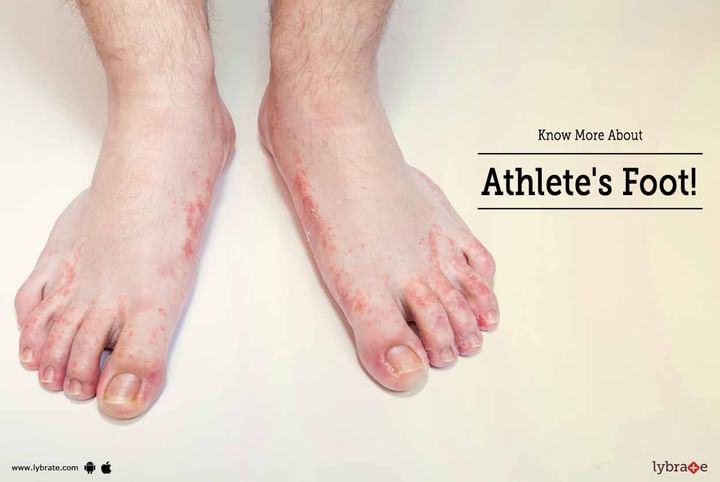Know More About Athlete's Foot!
Athlete's foot is a common form of a fungal infection. It most commonly occurs between the toes and is medically known as tinea pedis. The most common cause are sweaty feet which when enclosed inside a tight-fitting shoe for a prolong time leads to this condition. The most common symptom of athlete's foot is a scaly rash which causes itching and burning on your foot. It is a contagious disease and is most commonly spread through towels or clothing of people who have that disease. It can also be spread through the floors which people with athlete's foot walk on. Here is everything you need to know about athlete's foot.
Causes:
- Dirty wet socks inside covered shoes: As mentioned earlier, athlete's foot is a contagious disease which originates from wearing dirty wet socks inside covered shoes.
- Infection: You may also get it by coming into contact with an infected person or their towels and/or clothing. Even walking on the same floor as they walk on may cause an infection.
Symptoms:
- Scaly red rash: There is usually a scaly red rash in between the toes when you have athlete's foot.
- Itching: There will be severe itching throughout the persistence of this disease especially when you first take off your shoes.
- Blisters and ulcers: This is not a very common symptom of athlete's foot. However, blisters and ulcers do occur on certain types of athlete's foot.
- Chronic dryness and scaling: This occurs on the soles of the feet and then slowly starts spreading upwards. These symptoms only occur on the type of athlete's foot known as moccasin. Due to this, athlete's foot is often mistaken for eczema and sometimes even dry skin.
- Spreading to the hand: Athlete's foot always starts in your legs and in some cases spread to your hands as well. The likelihood of athlete's foot spreading to your hand is increased if you scratch or pick at the areas of the foot infected.
Treatment:
There are three stages of treatment and these depend on the severity of the infection.
- Over-the-counter medicines: In the first stage of treatment, the doctor will simply prescribe over-the-counter antifungal ointments, sprays or powders.
- Prescription medications: In the next stage of treatment, prescription medications need to be applied to your feet.
- Antifungal pills: If nothing else works, only then should antifungal pills be prescribed.
In case you have a concern or query you can always consult an expert & get answers to your questions!



+1.svg)
